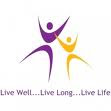In this day and age of slathering sunscreen on and avoiding the sun all together it is time to rethink our thinking about what we think we know about the sun and its harm versus benefits. How do we balance between the 70’s bronze goddess, Farrah Fawcett and the 21’st century pale pop queen, Madonna. The question is…is it still cool to be pasty? Or is there some truth to “a healthy tan”?
Researchers are suggesting that because people have become frightened of getting skin cancer they are avoiding the sunshine altogether. However, sunshine offers the only source of activating vitamin D, which protects the body from a number of diseases. Estimates are that about 30 – 45% of all adults are vitamin D deficient. If you are unsure about your vitamin D levels, a simple blood test from your primary care physician can be requested. According to scientists at the U.S.
Recent studies have shown that taking calcium, vitamin C and particularly vitamin D can retard the progression of arthritis and perhaps even prevent it. These studies found that those who had high levels of vitamin D in their bodies had less joint deterioration and fewer of the painful bone spurs and growths that can accompany arthritis as it worsens.
Vitamin D does double duty by helping to prevent aging of not only the skeletal system but also the immune system. Vitamin D helps you defend yourself and also helps prevent cancers such as colon, lung, breast, and prostate cancer.
Good food sources of vitamin D are cod liver oil, tuna, salmon, sardines, mackerel, oysters, herring, and milk. Recommendations for supplementing vitamin D for people under seventy are 400 IU a day and 600 IU if over seventy. In addition to the supplement it is recommended a person get ten to twenty minutes of sunshine a day without sunscreen. This enables our bodies to convert the consumed vitamin D to Vitamin D3, which is the active form that our bodies can use. If you are going to have sun exposure over twenty minutes, sunscreen is recommended. Please be aware that a SPF 8 sunscreen reduces your vitamin D production by 95% and SPF 30 cuts it to 0%. The risk of skin cancer from a little sunlight is less than the benefits you gain from having healthy vitamin D levels.
Another important benefit of sunshine is that it helps avoid a form of depression called seasonal affective disorder (SAD). This occurs in relation to the seasons, most commonly beginning in winter. The cause of SAD is not known but the decrease in sunlight is thought to be one of the causes.
So the facts are in : As in everything in life, moderation is the key. A balance between the bronze goddess and the pale pop Queen is the ideal. A healthy glow really is healthy and the look you should strive for. Sunshine on your shoulders really does make you happy, so don’t be afraid of the sun. Let the sun shine in!
May you be empowered to be the author of your own health.





